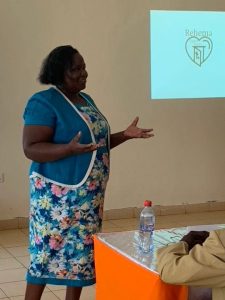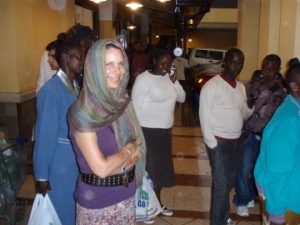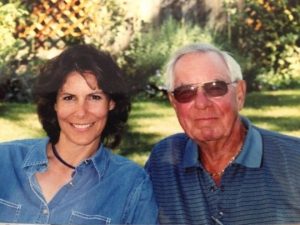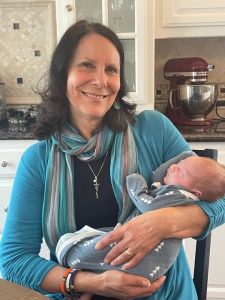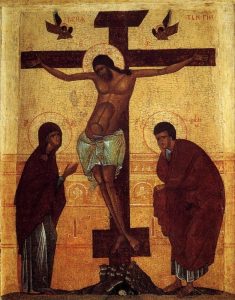My friend, Kenyan Deaconess Callen contacted me recently via whatsapp. She sent me a a photo of a woman, Virginia, we had visited together in the slums of Kawangware in August 2014 and again in 2019. Callen wrote “She is very weak. Let’s join hands praying for her.” Today, I resurrect and revise a 2014 writing in honor of Callen and Virginia—women, I am honored to have in my life as friends and mentors in mercy.
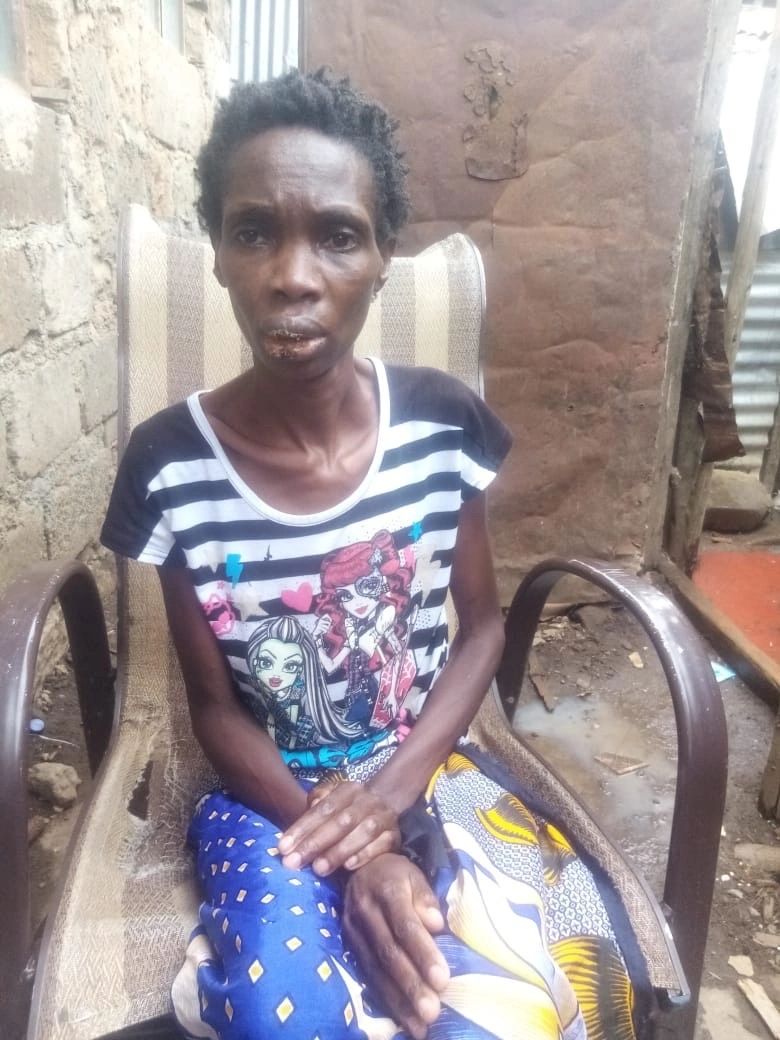
Virginia, 2020
Kawangware (one of the slums of Nairobi)
“The Congo” (a neighborhood within Kawangware)
The smell assaults me as I step into the territory of “The Congo”. It’s not the usual smells belonging to Nairobi and her slums—acrid smoke from indoor charcoal fires, diesel smoke from worn out matatus, human sweat, and raw sewage running through narrow troughs in the hardpacked dirt. No, this smell is offensively sweet and strong. It wafts from plastic cups filled with homemade brew— alcohol that fuels the bellies of men who line the garbage-strewn streets and alleyways. The pale liquid torches fires in men’s loins, bringing out a false bravado egging them on to speak, leer, lurch and touch. The clamor is great, each voice vying for the attention of passersby, especially if the passerby is of the female persuasion. It certainly doesn’t help to be both female and a muzungo (white skinned person). God help the little girls in this territory.
Fear overwhelms me, creating a tightness and rigidity in my own belly. Instinctively, I clutch my bag and my limbs, in an attempt to find some sense of security in a place that verges on the brink of being dangerously out of control. Fear stirs up a strong desire to flee. My Kenyan deaconess sister, Callen, comes to my rescue and hooks her sturdy arm through mine. I follow her lead and try to look confident and tough. At this moment, I am neither.
After ten minutes of walking, we reach our destination– a tiny tin house, connected to fifty other houses via thin metal sheets, as is the norm in the slums. Callen pulls aside the thin cotton curtain and enters the one room structure. Here, the chaos gives way to serenity. I feel my body relax as we cross the threshold. Inside the darkened room there is light in the form of a woman, Virginia, holding a baby boy. Callen introduces me to her and explains her difficult circumstances. Virginia is HIV+ and a widow. She has neared the ledge of death several times in the last couple of years. Callen has attended to her. Now, Virginia is serenely reading Psalm 69 to us, filling us with hope. She recounts the numerous times Deaconess Caren has faithfully come to visit her, bringing her food, medicine, hope and the light of Christ in dire times.
The clamor of men’s voices and tinny music blaring from radios can still be heard from inside this sanctuary—there is no external peace in “the Congo”. No shutting the door and getting away from it all. One must find a way to that inner peace that comes from Christ. Or perhaps better said–in the midst of suffering, one learns to depend on the peace that comes from Christ. This is true for us all, but it is more evident here where the effects of poverty are inescapable and the edges of life are hard and sharp, punctuated by men that drink and rape.
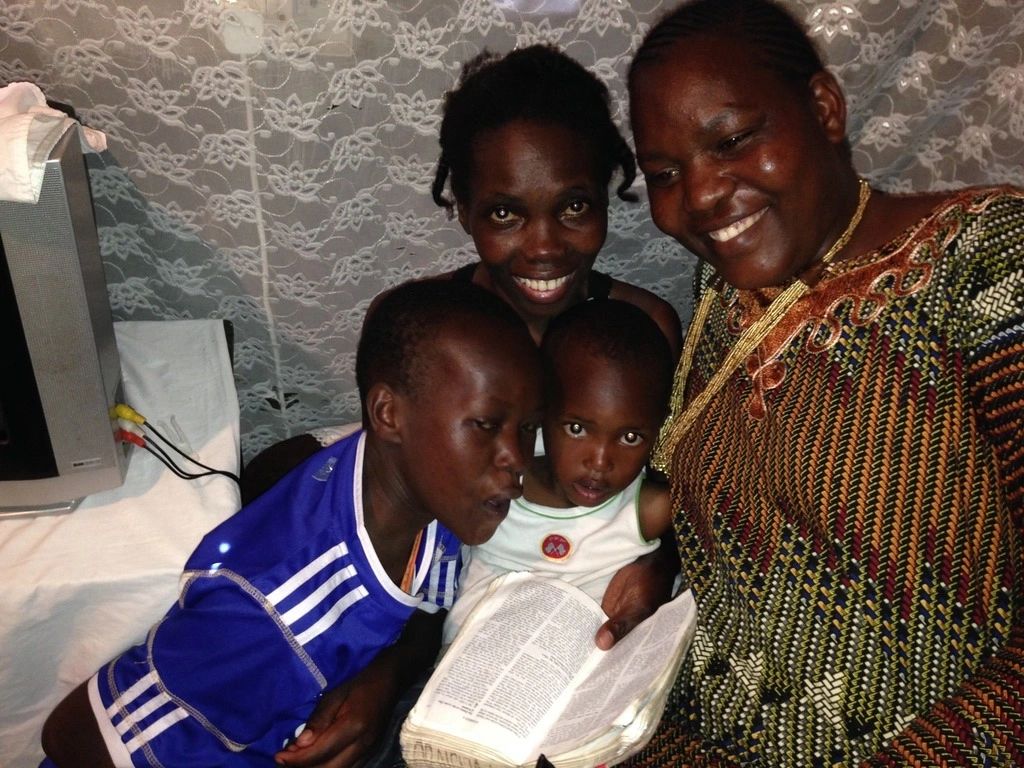
Virginia and two of her children. Deaconess Callen on the right. 2014 (and no, the TV is not hooked up to anything. I don’t think it even works)
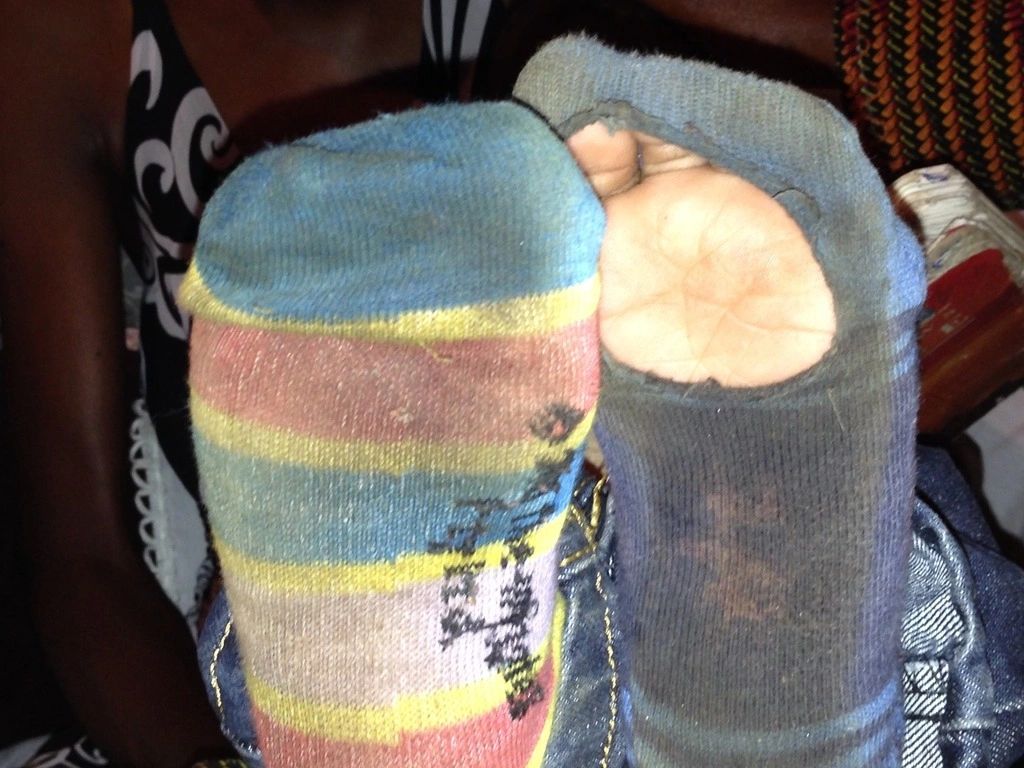
A reminder of the harshness of life in the slums and the terrible beauty here
During my eleven trips to Kenya, I’ve walked the dirt roads of the slums of Kawangware and Kibera many times. I have come to love the people who inhabit these places. I have learned to step over the raw feces on the path, dodge the filthy water that runs through the ruts on the alleyways, adjust my eyes to the darkened houses, and squeeze into a space so small it seems impossible that ten people could live there. And through it all, I have learned there is always hope, even when I am unable to see it. It is a hope that is deeply embedded in the hearts and souls of my brothers and sisters here. It is a hope that comes from the faithfulness of those who bring Christ’s mercy by their presence. It is a hope that comes from those who bring mercy in the form of singing, sharing a Psalm, a prayer, food and touch. It is a hope that is echoed through the voices here—those who give thanks to God for His steadfast love and mercy.
It is a hope that gives me hope and strength. And for that I am eternally grateful.
Always Mercy,
Pamela
P.S. Coming soon—an update on plans for the hospice house. Yes, it’s still moving forward!

